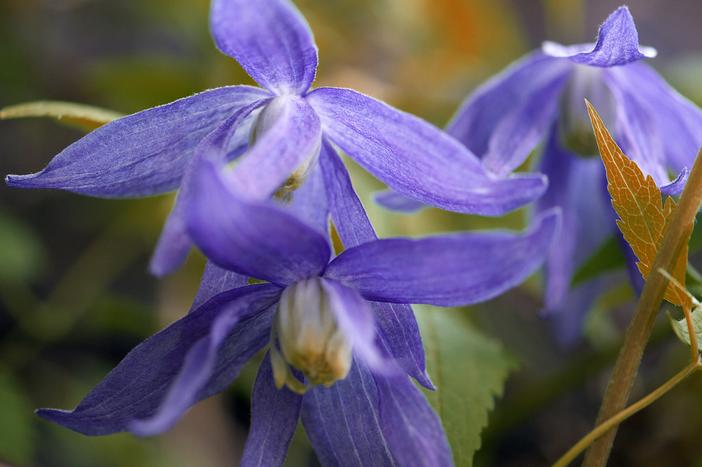Alpine Clematis
(Clematis alpina)
Alpine Clematis (Clematis alpina)
/
/

jayscratch
CC BY-SA 2.0
Image By:
jayscratch
Recorded By:
Copyright:
CC BY-SA 2.0
Copyright Notice:
Photo by: jayscratch | License Type: CC BY-SA 2.0 | License URL: https://creativecommons.org/licenses/by-sa/2.0/ | Uploader: jayscratch | Publisher: Flickr





































































Estimated Native Range
Summary
Clematis alpina, commonly known as Alpine Clematis or Alpine Virginsbower, is a deciduous vine native to mountainous regions of Europe. It thrives in cool, well-drained soils often found in rocky and woodland areas, where it can climb on shrubs and trees. This species typically grows to a height of 6-10 feet and a width of 3-6 feet, with a twining and climbing habit that makes it ideal for trellises and garden supports.
Alpine Clematis is celebrated for its profusion of bell-shaped flowers that appear in a variety of colors including blue, cream, silver, pink, purple, red, and white, blooming in late spring to early summer. The flowers are particularly showy, making it a favorite among gardeners for adding vertical interest to gardens. It has earned the Royal Horticultural Society’s Award of Garden Merit, indicating its excellence for garden use. Alpine Clematis is often used to cover walls, fences, and pergolas, and can also be grown in containers for patio display. It prefers a sunny to part-shade location with some protection from intense afternoon sun. The plant requires consistent moisture but is intolerant of waterlogged conditions, thus well-draining soil is essential. Mulching can help maintain soil moisture and keep the root zone cool. While generally low maintenance, it can be susceptible to clematis wilt, a fungal disease that causes sudden collapse of the plant. Pruning group 1 clematis, Alpine Clematis requires little pruning other than to remove dead or weak stems in late winter or early spring.CC BY-SA 4.0
Alpine Clematis is celebrated for its profusion of bell-shaped flowers that appear in a variety of colors including blue, cream, silver, pink, purple, red, and white, blooming in late spring to early summer. The flowers are particularly showy, making it a favorite among gardeners for adding vertical interest to gardens. It has earned the Royal Horticultural Society’s Award of Garden Merit, indicating its excellence for garden use. Alpine Clematis is often used to cover walls, fences, and pergolas, and can also be grown in containers for patio display. It prefers a sunny to part-shade location with some protection from intense afternoon sun. The plant requires consistent moisture but is intolerant of waterlogged conditions, thus well-draining soil is essential. Mulching can help maintain soil moisture and keep the root zone cool. While generally low maintenance, it can be susceptible to clematis wilt, a fungal disease that causes sudden collapse of the plant. Pruning group 1 clematis, Alpine Clematis requires little pruning other than to remove dead or weak stems in late winter or early spring.CC BY-SA 4.0
Plant Description
- Plant Type: Vine
- Height: 6-10 feet
- Width: 3-6 feet
- Growth Rate: Moderate
- Flower Color: Blue, Pink, Purple, White
- Flowering Season: Spring
- Leaf Retention: Deciduous
Growth Requirements
- Sun: Full Sun, Part Shade
- Water: Medium
- Drainage: Medium
Common Uses
Bee Garden, Bird Garden, Border Plant, Butterfly Garden, Deer Resistant, Drought Tolerant, Hummingbird Garden, Low Maintenance, Potted Plant, Rabbit Resistant, Street Planting
Natural Habitat
native to mountainous regions of Europe
Other Names
Common Names: Alpen-Waldrebe, Alppikärhö, Alpklematis
Scientific Names: , Clematis alpina, Clematis atragene, Atragene alpina, Clematis ochotensis var. japonica, Clematis alpina var. sibirica, Atragene austriaca, Clematis alpina subsp. normalis, Clematis ochotensis f. apiciflora, Clematis wenderothii
GBIF Accepted Name: Clematis alpina (L.) Mill.